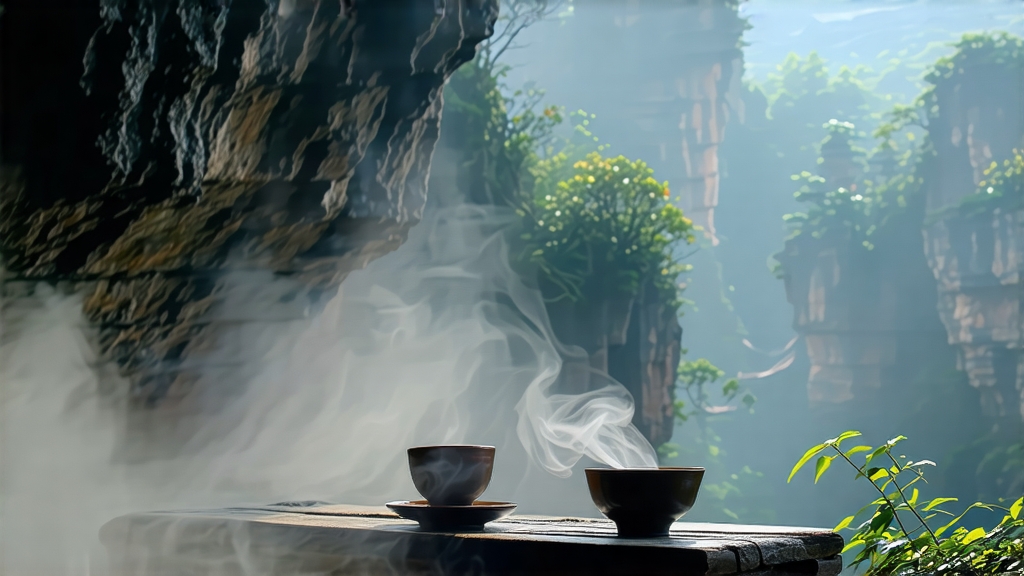
If green tea is the youthful scholar of Chinese tea and pu-erh the venerable sage, then Da Hong Pao sits between them like a battle-scarred poet-king, wrapped in a robe the color of dried plum and breathing the scent of cliff orchids after rain. Among the hundreds of oolong styles, none carries more myth, more mineral magic, or more governmental protection than Da Hong Pao, literally “Big Red Robe,” grown on the vertiginous lava cliffs of northern Fujian’s Wuyi Mountains. To understand it is to step into a 1,200-year drama of imperial taste, Buddhist monks, smuggled cuttings, and modern auction hysteria where 20 g of “mother-tree” leaf once sold for over one million RMB. Yet the tea is not a museum relic; it is alive, evolving, and increasingly accessible to anyone willing to master a gaiwan and listen to stone.
-
From Imperial Tribute to Global Cup
The first written record dates to the Tang Dynasty (618-907), when Wuyi monks served “rock tea” to traveling scholars. A Song-era stele mentions “tea that grows between stone and cloud,” and by the Ming (1368-1644) the imperial court demanded 1.25 tons annually, carried 2,000 km north by horseback. The romantic origin story—an emperor’s mother cured by the infusion, her red robe thrown over the bushes in gratitude—was probably cooked up by Qing-era marketers, but it cemented the name. After 1949 the mother trees, six ancient shrubs clinging to Tianxin Cliff, were nationalized; in 2006 picking from them was completely banned to protect the gene pool. Today every leaf sold as “Da Hong Pao” comes from cuttings propagated during the 1980s and 1990s, collectively called “purebred qidan.” The word “mother-tree” on a modern tin is either poetic license or fraud. -
Terroir: When Stone Learns to Brew
Wuyi’s Danxia landform, a UNESCO site, is a playground of purple-red rhyolite and shale that weathers into shallow, mineral-saturated soil. Day-night temperature swings can exceed 15 °C; mist rises from the Nine-Bend River, refracting sunlight into a soft, blue glow. The tea bush, usually the medium-leaf “qidan” cultivar, sinks roots into fissures barely 10 cm deep, forcing it to sip dissolved potassium and fluoride. The result is the celebrated “yan yun” or “rock rhyme,” a tactile afterimage that feels like licking a wet river stone, followed by a cooling menthol lift in the throat. No other oolong, not even the honeyed Phoenix Dancong or the milky Alishan, can replicate this lithic echo. -
Craft: The Art of Playing with Fire
Harvest arrives in early May, just before the Grain Rain. Pickers pluck the standard “zhong kai mian” standard—three or four half-mature leaves with a 4 cm stem—when the leaf’s edge turns golden and the central vein flushes translucent. Wilting happens on bamboo trays in a cave-like room kept at 28 °C and 65 % humidity; the leaf is turned every 20 min to bruise the edges, initiating oxidation. At 30 % oxidation the leaf is still green in the center but copper on the rim; this midpoint is what separates oolong from black tea. Next comes the Wuyi signature: charcoal roasting in squat, brick kilns. Using local hardwood ash, the tea master bakes the leaf in bamboo sieves stacked inside a horse-shoe-shaped oven. Temperature starts at 120 °C and falls to 80 °C over 8 h; the process is repeated two to four times across three months. Between roasts the tea “rests,” allowing moisture to migrate from stem to leaf, preventing brittleness. A master can read the fire by the sound of sizzling leaf—too loud and the aromatics volatilize; too quiet and the dreaded “green stomach” (raw grassy core) survives. The final moisture target is 3 %, low enough to crush into powder between fingers yet high enough to continue micro-fermentation during years of aging. -
Style Matrix: Mother Trees, Purebred, Blends
Legally, “Da Hong Pao” is a protected geographical indication;